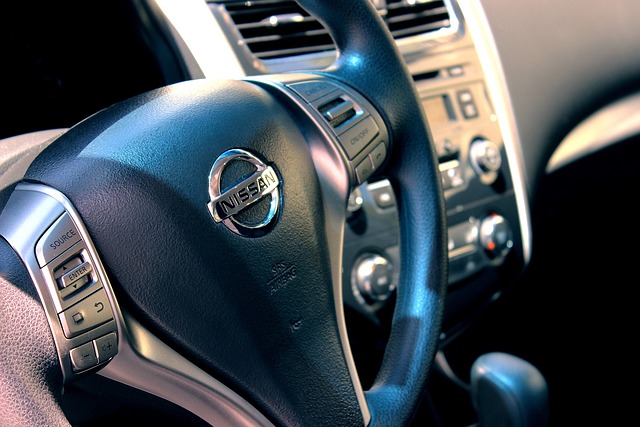Usage-based car insurance uses tracking devices or apps to monitor driving habits, calculating premiums based on distance, time, speed, and braking events. It offers personalized rates, rewarding safe drivers while penalizing risky behavior. This method enhances budgeting flexibility, encourages safer driving, and provides transparent pricing. To transition, drivers should assess their habits, research insurers, get quotes, and review policy terms before switching.
With car insurance costs soaring, drivers are seeking innovative solutions. Usage-based and pay-as-you-drive insurance policies emerge as attractive alternatives, offering personalized coverage based on individual driving habits. These policies not only encourage safer driving but also deliver substantial financial savings by aligning premiums with actual risk profiles. This article guides you through the intricacies of these customized policies, explaining how they work, their benefits, and practical steps to transition to a more affordable, tailored insurance plan.
- Understanding Usage-Based Car Insurance
- How Pay-as-You-Drive Policies Work
- Benefits of Personalized Premium Calculation
- Evaluating Your Driving Habits for Savings
- Steps to Switch to a Customized Policy
Understanding Usage-Based Car Insurance

Usage-based car insurance is a modern approach to premium calculation, where your insurance rates are determined by how you drive. It involves tracking your driving behavior through specialized devices or apps installed in your vehicle. These tools monitor factors like distance traveled, time of day and night driving, hard braking events, and speeding incidents. By analyzing this data, insurers can offer personalized premiums that reflect your actual risk profile as a driver. This method ensures that you pay for the coverage you need based on your specific habits, potentially saving money if you’re a careful driver.
Unlike traditional policies that rely on broad demographic and vehicle information, usage-based plans provide a more accurate reflection of your individual driving style. For example, if you primarily drive short distances during off-peak hours, an insurer can account for this low-risk behavior in their quote. This tailored approach not only encourages safer driving but also empowers individuals to make informed choices about their coverage, especially as they navigate rising insurance costs.
How Pay-as-You-Drive Policies Work

Pay-as-you-drive policies are designed to reflect an individual’s actual driving behavior. Instead of paying a fixed premium, drivers install a device in their vehicle that tracks metrics such as distance traveled, time of day driven, and speed. This data is then used by insurance companies to calculate the user’s risk profile dynamically. If a driver maintains safe habits, consistently adhering to speed limits and avoiding late-night driving, they may see lower premiums. Conversely, risky behavior can lead to increased rates.
These policies aim to incentivize responsible driving by directly tying the cost of insurance to actual risk. By rewarding good driving habits, users can potentially save significant amounts on their car insurance over time, making it an attractive alternative for those looking to manage rising premium costs.
Benefits of Personalized Premium Calculation

Personalized premium calculation through usage-based insurance and pay-as-you-drive policies offers several compelling benefits. Firstly, it encourages safer driving habits by aligning premiums with actual risk levels. Drivers who exhibit responsible behavior behind the wheel can expect lower rates, incentivizing them to maintain or improve their safety record. Secondly, these policies provide transparency in pricing as premiums are directly linked to individual driving patterns, eliminating hidden fees and surprise billings.
Additionally, personalized insurance allows for more flexibility in budgeting. Drivers with lighter usage or less risky profiles can secure affordable coverage tailored to their needs, while those with higher mileage or riskier behaviors may find savings through competitive rates based on their specific data. This approach democratizes access to insurance, ensuring that drivers pay only for what they use and how they drive.
Evaluating Your Driving Habits for Savings

Evaluating your driving habits can unlock substantial savings on car insurance. Start by tracking your mileage, as policies that reward low mileage often come with lower premiums. Analyze your driving behavior too; safe and defensive driving practices, avoiding rush hours, and adhering to speed limits can significantly impact your rates. These factors contribute to a lower risk profile for insurers.
Additionally, consider the time of day you drive. Nighttime or off-peak driving might lead to better rates as statistics show fewer accidents occur during these times. Regularly reviewing your policy and adjusting it based on changes in your driving routine is prudent. This proactive approach ensures you get customized coverage tailored to your current habits, potentially saving you money without compromising safety.
Steps to Switch to a Customized Policy

To switch to a customized policy like usage-based insurance, start by evaluating your current driving habits and identifying areas for improvement. Consider factors such as distance traveled, time of day driven, and speed limits observed. Accurately track your mileage and driving behavior over several weeks to gather reliable data.
Next, research insurers offering usage-based or pay-as-you-drive policies in your area. Visit their websites to explore policy options and understand how they calculate premiums based on driving habits. Obtain quotes tailored to your specific driving patterns, comparing rates from multiple providers to find the best value for your needs. Once you’ve selected a suitable policy, review the terms and conditions carefully before finalizing the switch.
As car insurance premiums continue their upward trend, drivers now have a powerful tool in their possession: usage-based and pay-as-you-drive policies. By embracing these innovative approaches, individuals can take control of their financial destiny, save money, and promote safer driving habits. This personalized coverage is not just a game-changer for managing rising costs; it also encourages responsible driving, ultimately making our roads safer for everyone.



